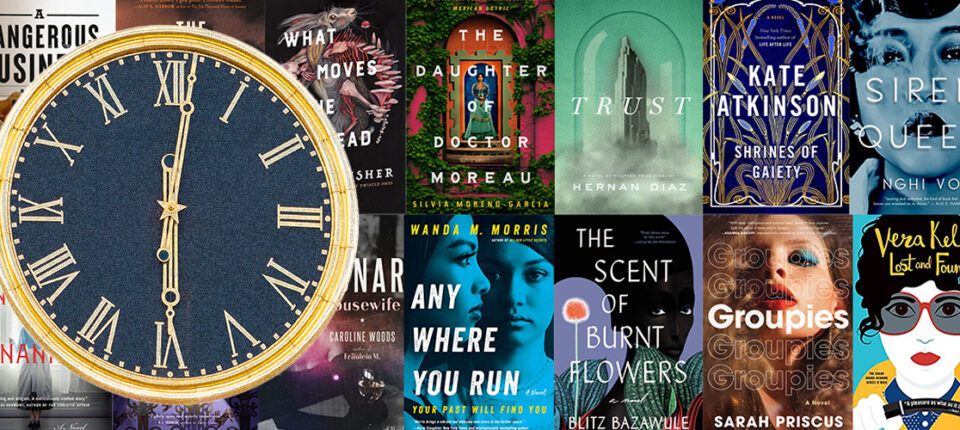The sun is shining, the flowers are blooming, and the historical fiction is proliferating! Here are a whole bunch of very good historical crime novels coming out over the summer months (with a few titles from spring and fall thrown in there), each one a richly detailed historical imagining that channels history for a modern audience while remaining true to the ideas and mores of its time period. While every day is a good day to read crime fiction set in the past, I personally feel this summer of setbacks to be a perfect time to remember the ways that ordinary people fought against powerful repressive forces in the past, and even managed to find some joy while doing so. The struggle is real—and it’s always been real, so let’s do our due diligence and honor the voices of the past while finding ways to follow their example in the present.
The following titles are, as always, arranged in chronological order based on the year of their setting. You’ll see quite a few titles set in the early 1960s, a phenomena we’ll be exploring soon on the site. Here’s a list from the beginning of the year, if you’d like recs for even more historical fiction!
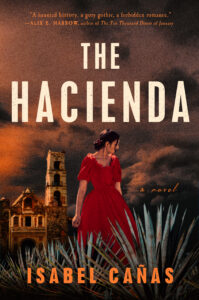
Isabel Cañas, The Hacienda
(Berkley, May 10)
Setting: Just after the Mexican War of Independence
Isabel Cañas takes the gothic novel to the haciendas, just as Silvia Moreno-Garcia’s Mexican Gothic took on the history of silver mining and imperialism. In The Hacienda, set just after the Mexican War for Independence, heroine Beatriz has been dispossessed of her family fortune after her father’s fall from political grace and subsequent execution. She finds a husband she feels will elevate her status and protect her mother from persecution, but strange happenings at her new estate and rumors of hauntings threaten to derail her new life, and a sexy local priest who moonlights as a witch is her only hope of survival. Lush, beautiful, and completely deserving of the comparisons to Rebecca, The Hacienda is essential reading in the gothic revival.
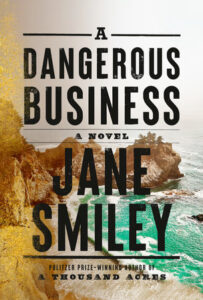
Jane Smiley, A Dangerous Business
(Knopf, December 6)
Setting: Monterey, 1851
In this Poe-influenced tale (the first of two on this list), Eliza Ripple, a young widow and sex worker, becomes concerned when vulnerable women start vanishing from the brothels of Monterey and no one among the authorities appears to much care. Eliza is also rather curious, and reads quite a bit of detective fiction, so she and her close friend embark on their own investigation. Eliza Ripple and her merry coterie are the kind of characters that feel both true to their age and perfectly at ease in ours, a rare feat for an historical fiction writer to accomplish. Jane Smiley has been writing literary explorations of the human condition for decades, and all of her novels are excellent, but you get the sense that she really had fun writing this one.

T. Kingfisher, What Moves The Dead
(Tor Nightfire, July 12)
Setting: Ruritania, 1890
Set in that 19th century placeholder for obscure nations, Ruritania, T. Kingfisher’s What Moves The Dead slyly reinvents The Fall of the House of Usher as a fungalpunk reckoning. An old soldier heads to a dilapidated castle to attend to their dying friend, but strange occurrences in the decaying manor distract from the mission of comfort and raise specters from past battles. Perfect for those who enjoyed Silvia Moreno-Garcia’s Mexican Gothic and thought, “I’d like to read some more horror involving mushrooms.”
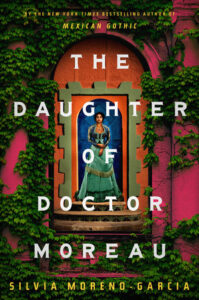
Silvia Moreno-Garcia, The Daughter of Doctor Moreau
(Del Rey Books, July 19)
Setting: The Yucatán Peninsula, Mexico, Late 19th Century
I can’t get enough of Silvia Moreno-Garcia’s playful takes on classic genres. In her latest, the Island of Doctor Moreau gets a Yucatan-set treatment, steeped in sultry atmospherics and set during the lead-up to the Mexican Revolution as the hacienda system begins to crumple. Carlota Moreau loves her scientist father, whose injections keep her alive; she loves her fur-covered playmates, whose ailments can be ascribed to their mishmash of human and animal genes; she even cares for the drunken plantation overseer who facilitates the gruesome experiments. But her character was raised to be pampered, not tested, and her loyalties will soon face a breaking point as the goals of her father, his patron, and those they torture pull Carlota in opposite directions.
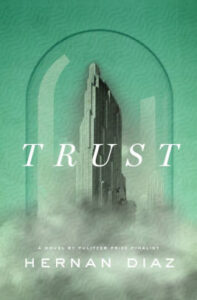
Hernan Diaz, Trust
(Riverhead, May 3)
Setting: New York and Continental Europe, 1920s
The brilliant title of Hernan Diaz’s new novel of the stock market refers to not only financial trusts and human trust, but also the trust that a reader has for a manipulative narrator. I’m a huge fan of stories that explore the nature of narrative itself, so I couldn’t resist the structure of this innovative tale. Trust is told first as a memoir by tycoon Benjamin Rask, aimed at setting the record straight after being blamed for the calamitous fall of the stock market in 1929. Next, we hear from several other perspectives, each upturning everything we thought we knew about the previous one, including the perspective of Helen Rask, Benjamin’s enigmatic spouse, known outwardly for her charity but harboring a shocking secret of her own. Trust stands alongside the best of layered fiction, including the Cuban film El Otro Francisco and Gordon MacAlpine’s The Woman with the Blue Pencil (my two personal faves that I will never stop recommending).
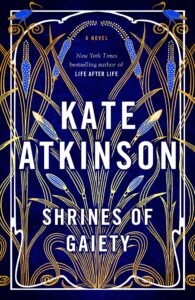
Kate Atkinson, Shrines of Gaiety
(Doubleday)
Setting: Soho, London, 1926
What could be better than a new Kate Atkinson novel? How about a new Kate Atkinson novel set in the past?!? Atkinson heads to the Roaring 20s for her upcoming literary novel with elements of crime. Shrines of Gaiety explores the peaks and nadirs of life in the demimonde-neighborhood of Soho, where the upper crust rubs shoulders with the down and out and the criminally successful. A perfect companion tale to Fiona Mosley’s well-received story of sex workers in modern-day Soho, Hot Stew.

Nghi Vo, Siren Queen
(Tordotcom, May 10)
Setting: Precode Hollywood
In Siren Queen’s alternate history version of 1920s Hollywood, studios use dark magic to ensure the success of their pictures, and stars, when they first rise, are as bright as a mercury bulb flash, and just as painful to look at in the flesh. Nghi Vo’s Chinese-American heroine will do anything to become a star (except play a maid or a doomed love interest), and instead carves out a powerful space for herself playing monsters. Meanwhile, she immerses herself in the Jazz Age’s thriving gay subculture. Her friends and lovers try as hard as they can to retain a sliver of themselves inside their outsized new personas, and find ways soaked in time and blood to fight back against the studio system. Hollywood + folk magic = amazing!!

Mariah Fredericks, The Lindbergh Nanny
(Minotaur, November 15)
Setting: New Jersey, 1932
Mariah Fredericks is an expert at capturing history’s ordinary voices in extraordinary circumstances, and The Lindbergh Nanny is her best yet. Betty Gow didn’t have the best experience with her previous nannying, so she’s shocked and delighted when she gets a job with the famed Lindberghs, even though Charles Lindbergh—and his hands-off child-rearing method—both seem rather cold. Gow is enchanted by her new charge, however, going to great lengths to make up for his parents’ benign neglect, and is devastated when the baby is kidnapped and she finds herself a suspect. An eyewitness view of a still-shocking event that makes for perfect historical fiction.
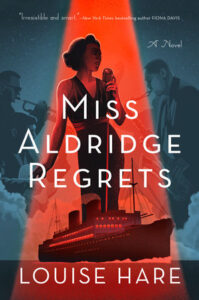
Louise Hare, Miss Aldridge Regrets
(Berkley, July 5)
Setting: London-NYC Ocean Crossing, 1936
A washed up nightclub singer gets a new chance at fame when she’s hired to play a swanky new gig on the oceanic liner the Queen Mary, but no sooner has she started singing than a murder on board threatens to disrupt her revived career, not to mention make her a suspect. What’s a world-weary woman of the stage to do? Well, she can start by solving the murder, and perhaps find a little love in between sets.

Mark Pryor, Die Around Sundown
(Minotaur, August 16)
Setting: Paris, 1940
Mark Pryor first won me with his charming Parisian-set Hugo Marston series, and now he’s exploring historical fiction with the upcoming WWII thriller Die Around Sundown, also set in Pryor’s beloved Paris. Pryor’s latest showcases his trademark setup: low down, dirty deeds in high culture establishments. This time, it’s the murder of a Nazi in the Louvre. Die Around Sundown was written as a tribute to Mark Pryor’s dear friend, Philip Kerr.

Olivier Guez, The Disappearance of Joseph Mengele
Translated by Georgia de Chamberet
(Verso, August 9)
Setting: Argentina, Brazil, and Paraguay, late 1940s-1970s
As Olivier Guez’s brilliant historical novel begins, the despicable doctor Mengele is living in Argentina, where he’s been welcomed by Peròn, who keeps a contingent of Nazis close by and has allowed in many of the worst war criminals of history into his nation. Mengele finds success in his new home and respect from his equally horrible peers, and spends the first 15 years or so sleeping with escorts, selling his father’s farm equipment, and giving the daughters of the elite illegal abortions on the side. After the capture of Eichman, Mengele becomes obsessed with the specter of Israeli pursuit, yet Guez does a wonderful job at capturing the mindset of a hunted Nazi who’s still utterly convinced that he’s done nothing wrong, despite the occasional nightmare in his sleep that says otherwise.
Most have made Mengele into a complete monster, but Guez does something much more interesting: he takes the monster and shows him as pathetic, disgusting, declining, and weak—exactly as Nazis and their ilk should be portrayed. When you depict someone as classically monstrous, you risk inspiring others to follow in their footsteps for the notoriety alone, but when you find the most squabbling, pathetic, petty parts of a villain to highlight, you can perhaps help to ensure that no one will seek to emulate them.

Lev A. C. Rosen, Lavender House
(Forge, October 18)
Setting: Los Angeles, 1952
In the midst of an America under the sway of McCarthyism, a gay policeman gets caught in a raid on an underground club and finds himself at loose ends and newly a pariah. Rescued from suicidal ideation by the wealthy owner of a soap dynasty, he accepts a commission to investigate a murder in a house where everyone is queer, including the servants and the victim. Lavender House, an art deco mansion in a secluded area outside of San Francisco, is more than just a refuge for those who would live openly as gay, and as the ex-cop uncovers its secrets, his own life becomes more and more in danger.

Caroline Woods, The Lunar Housewife
(Doubleday, June 14)
Setting: New York City, 1953
Woods offers up a heady mix of espionage, historical fiction, and literary mystery with The Lunar Housewife, set in a richly-evoked midcentury downtown New York literary scene, where her protagonist finds herself somewhere at the intersection of the artistic vanguard and the spymaster’s crosshairs. The story follows the arc of a new literary magazine in which the government has taken a keen interest, leading to a swirl of paranoia and double-crosses. –Dwyer Murphy, CrimeReads Editor-in-Chief

Natasha Pulley, The Half-Life of Valerie K
(Bloomsbury, July 26)
Setting: Siberia, 1963
Natsha Pulley heads to the gulags, then to an atomic village, in her latest to combine fast-paced action and imaginative settings with beautifully developed queer relationships. When it comes to understanding the effects of radiation on the human body, Valery K is the best, so it’s shocking but not too shocking when he’s released from the gulag under one condition: he goes to work for his old college mentor, herself in charge of mysterious experiments in a Siberian village where everything, including the local residents, appears to be irradiated.
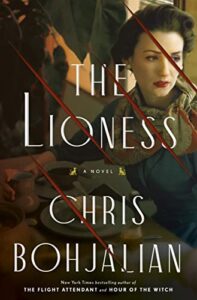
Chris Bohjalian, The Lioness
(Doubleday Books, May 10)
Tanzania, 1964
A safari organized by a starlet does not go as planned in Bohjalian’s new historical novel, The Lioness, which just may be his best yet. The trip to a nature reserve sounds like a dream, but a group of kidnappers plus a host of dangerous wildlife are ready to show these tourists that the days of colonialist excess are over. The early 1960s are captured in technicolor, and Bohjalian effortlessly merges character development with wider historical concerns.

Wanda M. Morris, Anywhere You Run
(William Morrow, October 25)
Setting: Jackson, Mississippi, 1964
Wanda Morris burst onto the scene last year with her impeccably plotted legal thriller, All Her Little Secrets, and her new novel keeps a legally-minded heroine as one of its leads but takes us back to 1964. When Violet Richards is raped by a white man, she takes her revenge, then goes on the run, soon followed by her sister Marigold, who aspires to be a lawyer but first must make a decision about her unwanted pregnancy. A southern setting where voting and abortion are both increasingly restricted feels…rather like today, if I’m honest. Wanda Morris, too, has noted the parallels, and there is a sense of political urgency that helps speed this thriller along.
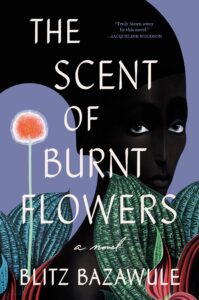
Blitz Bazawule, The Scent of Burnt Flowers
(Ballantine Books, June 28)
Setting: Ghana, 1966
In Blitz Bazawule’s 1966-set novel The Scent of Burnt Flowers, Civil Rights and decolonization intersect as a Black American couple on the run from the law hopes to find refuge in Ghana with the new president, the real-life figure Kwame Nkrumah. As the couple attempts to reach the new president, a white American special agent doggedly pursues them, and they receive aid from a high-life musician who becomes enmeshed in a complex love triangle with the couple that also maybe involves mermaids.
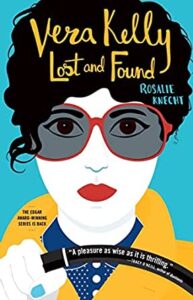
Rosalie Knecht, Vera Kelly Lost and Found
(Tin House, June 21)
Setting: Los Angeles, 1971
Vera Kelly is back! If you’re not reading her rolicking adventures from spy-hood to PI-dom, you absolutely should. In this third installment, which takes place in the spring of 1971, Vera and her girlfriend Max head to Los Angeles to visit Max’s estranged family, now in ruins. Max’s parents are divorcing, her father is engaged to a younger woman and is being influenced by “an occultist charlatan” (via the book description but I love this phrase), her mother has up and left, and soon, Max herself winds up missing. And Vera is the only one who can find her. –Olivia Rutigliano, CrimeReads Associate Editor

Sarah Priscus, Groupies
(William Morrow, July 12)
Setting: Los Angeles, 1971
Groupies is a 70’s-set rock ‘n roll novel about the complexities of doing nothing when your friend is dating the abusive frontman of a group vaguely modeled on Led Zeppelin and you’re entirely dependent on both of their goodwill to start your photography career. That’s a sentence the characters would be able to say without taking a breath because they are all doing a ton of what Fleetwood Mac called “Gold Dust Woman.” An epic tale of love, friendship, betrayal, and the long slide from sixties ideals into seventies addictions.

Audrey Magee, The Colony
(FSG, May 17)
Setting: Ireland, 1979
Audrey Magee’s stirring new novel The Colony is about two outsiders–a painter and a scholar–who journey to a remote, isolated island off the coast of Ireland in 1979. Mr. Lloyd wants to capture its beauty, away from the erupting violence on the mainland, while Jean-Pierre Masson, who has studied the island, is adamant that it should remain undisturbed. But the islanders are in the middle of their own personal reckonings, as they figure out their place in their home, and the country at large. A breathtaking and poignant story about language, art, and cultural identity. –Olivia Rutligliano, CrimeReads Associate Editor
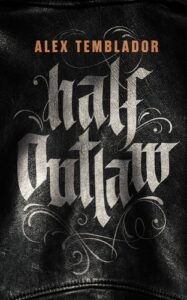
Alex Temblador, Half Outlaw
(Blackstone, July 12)
Setting: California, 1960s and 1990s
If you were a fan of Sons of Anarchy but really wished there had been a biracial female narrator putting her own spin on toxic masculinity and bigotry, then Half Outlaw is the book for you. And me. I really enjoyed this book. Alex Temblador’s orphaned protagonist was raised by her outlaw biker uncle and his crew, but takes after her Mexican father and never felt fully accepted by the casually racist motorcycle club (the author wrote Half Outlaw partly to explore her own biracial identity). After her uncle dies, she’s called back to the club for one final Grieving Ride, and must reexamine her complicated relationships with the men who raised her, imperfectly but with love.

